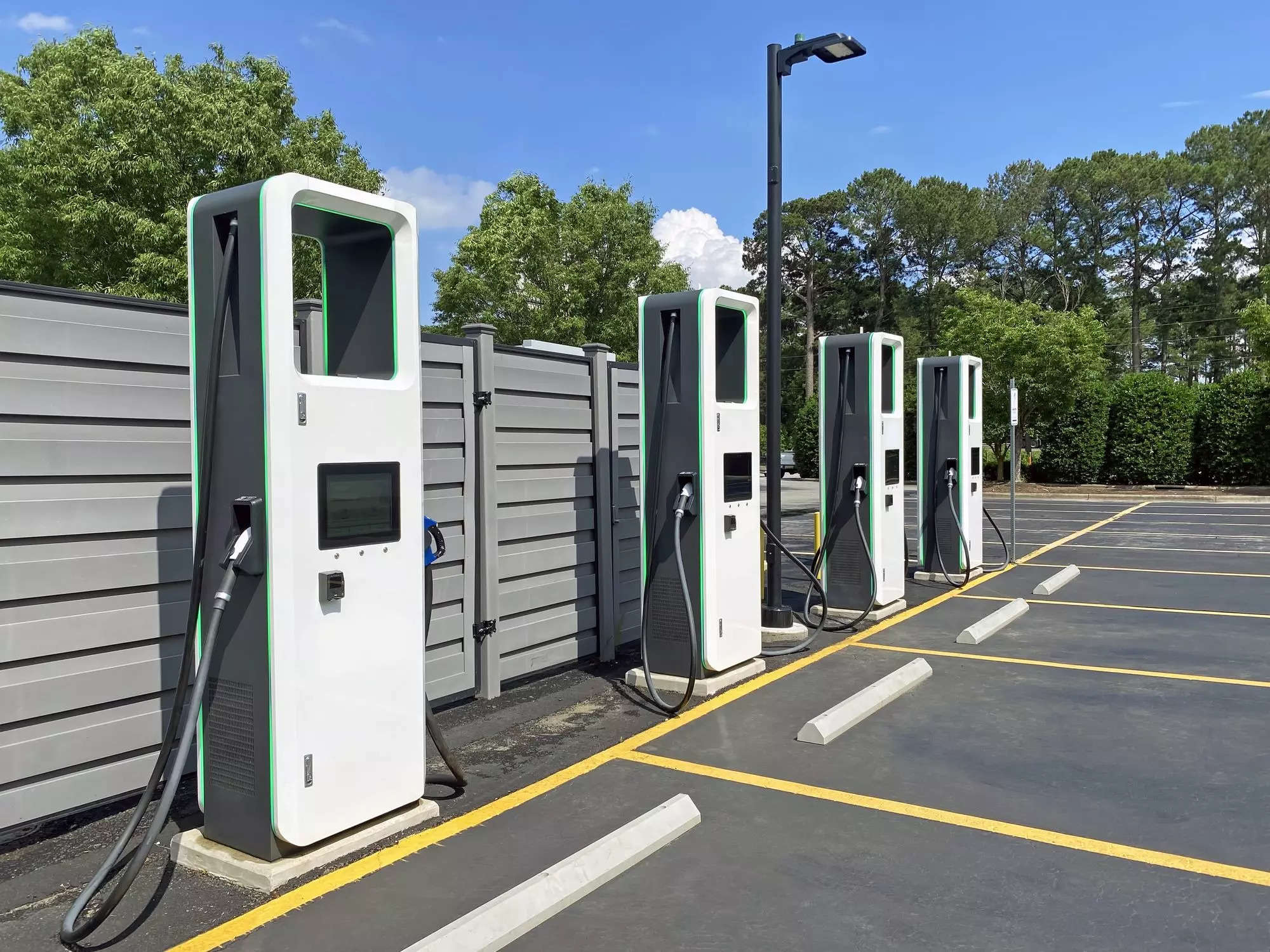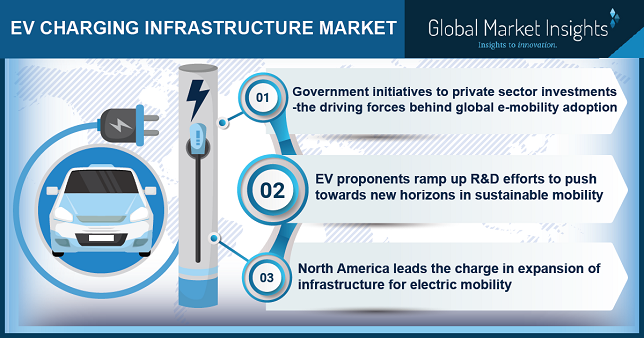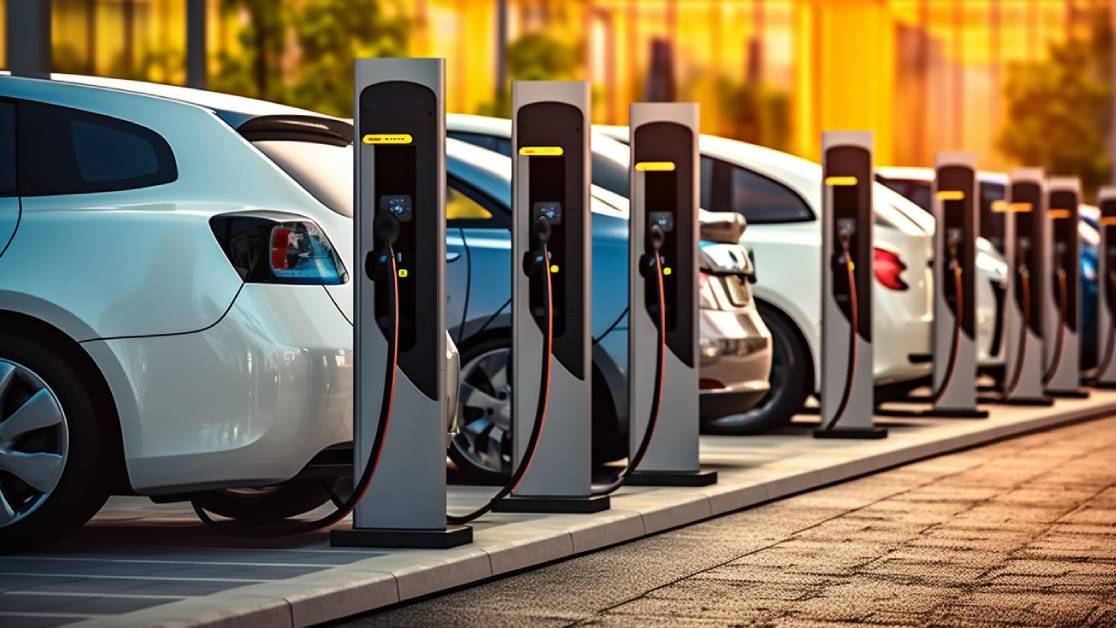Charging infrastructure expansion is crucial for the widespread adoption of electric vehicles (EVs). It ensures convenient and accessible charging for all users.
Electric vehicles are rapidly gaining popularity due to their environmental benefits and cost savings. To support this growth, a robust charging infrastructure is essential. Expanding the network of charging stations reduces range anxiety and makes EVs a viable option for more people.
Public and private sectors are investing in advanced charging technologies and strategically placing stations in urban and rural areas. This expansion not only supports current EV owners but also encourages more consumers to switch to electric vehicles. A well-developed charging infrastructure is key to a sustainable and efficient transportation future.

Credit: auto.economictimes.indiatimes.com
Current State Of Charging Infrastructure
The charging infrastructure for electric vehicles (EVs) is growing fast. Yet, many challenges remain. This section explores the existing networks and the issues they face.
Existing Networks
Several networks provide charging stations. These include public, private, and home-based stations. Public stations are in cities, highways, and parking lots. Private stations are in workplaces and apartment complexes. Home-based stations are for individual use.
| Network Type | Location | Accessibility |
|---|---|---|
| Public | Cities, highways, parking lots | Open to all |
| Private | Workplaces, apartment complexes | Restricted access |
| Home-based | Individual homes | Personal use |
Public stations are the most widely used. They are often free or low-cost. Private stations serve specific groups. Home-based stations offer convenience and control.
Challenges Faced
There are several challenges in expanding the charging infrastructure. These include:
- High installation costs
- Lack of standardization
- Limited range of EVs
- Grid capacity issues
- Geographical disparities
High installation costs make it hard for businesses to set up stations. A lack of standardization means different chargers are needed for different EVs. This complicates the user experience.
The limited range of EVs also affects infrastructure needs. More stations are required to support long-distance travel. Grid capacity issues can cause power shortages. This limits the number of stations that can be supported in an area.
Lastly, there are geographical disparities. Urban areas have more stations compared to rural locations. This makes EV adoption less feasible in remote areas.
Addressing these challenges is crucial for a sustainable future. The expansion of the charging infrastructure requires a coordinated effort from all stakeholders.
Importance Of Charging Stations
Charging stations are vital for electric vehicles (EVs). They ensure drivers can charge their cars easily. This makes EVs more practical for everyday use.
As the number of EVs grows, the need for charging stations increases. They play a crucial role in supporting green energy initiatives.
Impact On Ev Adoption
Charging stations boost EV adoption by reducing range anxiety. With more stations, drivers feel confident about long trips.
EVs become a viable option for many more people. This shift helps in reducing carbon emissions and reliance on fossil fuels.
Governments and businesses are investing in charging infrastructure. This creates a positive feedback loop, encouraging more people to switch to EVs.
User Convenience
Convenient charging stations are crucial for user satisfaction. They ensure drivers can charge their vehicles without hassle.
Stations located at shopping centers, workplaces, and highways make charging accessible. This convenience is essential for EV users.
Table of Key Locations for Charging Stations:
| Location | Benefits |
|---|---|
| Shopping Centers | Charge while shopping |
| Workplaces | Charge during work hours |
| Highways | Charge during long trips |
These strategically placed stations enhance the EV experience.
Technological Advancements
The charging infrastructure is growing fast. Technological advancements drive this growth. New solutions make charging quicker and easier. Learn about these exciting innovations.
Fast Charging Solutions
Fast charging solutions reduce waiting time. Charging stations offer higher power outputs. This means quicker charging for electric vehicles (EVs).
| Technology | Charging Time |
|---|---|
| DC Fast Charging | 20-30 minutes |
| Ultra-Fast Charging | 10-15 minutes |
These fast charging stations are located in key areas. They ensure EV drivers can recharge quickly. This technology is crucial for long-distance travel. It also supports urban commuting.
Wireless Charging
Wireless charging is another breakthrough. It removes the need for cables. EVs charge by parking over a special pad.
- Convenient and user-friendly
- Reduces wear and tear on connectors
- Safe and efficient
Wireless charging stations are being installed in homes and public places. This technology is still evolving. Future improvements will make it even better.

Credit: www.telematicswire.net
Government Initiatives
The expansion of charging infrastructure is crucial for the growth of electric vehicles (EVs). Governments around the world are stepping up to support this transformation. Let’s explore some key initiatives that are driving change.
Incentives And Grants
Governments offer various incentives and grants to boost EV adoption. These financial aids make EVs more affordable for the public.
- Tax Credits: Buyers can get tax credits for purchasing EVs.
- Rebates: Some regions provide cash rebates on EV purchases.
- Grants for Businesses: Companies can apply for grants to install charging stations.
These incentives not only help buyers but also encourage businesses to support EV infrastructure. Public and private sectors both benefit from these grants.
Policy Support
Policies play a key role in expanding charging infrastructure. Governments create policies to ensure smooth deployment of charging stations.
| Policy Type | Description |
|---|---|
| Regulatory Mandates | Rules that require new buildings to include EV charging points. |
| Funding Programs | Programs that provide funds for public charging stations. |
| Public-Private Partnerships | Collaborations between the government and private firms. |
These policies create a supportive environment for both consumers and businesses. They ensure the infrastructure keeps pace with the growing number of EVs.
Private Sector Contributions
The private sector plays a huge role in expanding charging infrastructure. Their efforts speed up the process and improve accessibility. Let’s explore the key contributions from the private sector.
Corporate Investments
Many companies invest in charging infrastructure. These investments help create more charging stations. This benefits electric vehicle (EV) users by making charging more convenient.
Some notable companies making big investments include:
- Tesla: Building Supercharger networks worldwide.
- Volkswagen: Investing in Electrify America.
- Shell: Installing chargers at gas stations.
These investments show a strong commitment to sustainable transportation. They ensure that EV users have access to fast and reliable charging options.
Public-private Partnerships
Public-private partnerships are crucial for expanding charging infrastructure. These collaborations bring together government and private firms. Together, they create more charging stations.
Some successful partnerships include:
| Partnership | Objective |
|---|---|
| ChargePoint & USA Government | Create a nationwide network of chargers. |
| BP & UK Government | Install chargers at public places. |
These partnerships help fill gaps in the current infrastructure. They ensure that everyone has access to charging stations, even in remote areas.
Overall, the private sector’s contributions are vital. They make charging infrastructure more robust and accessible for all.
Urban Vs. Rural Infrastructure
Expanding charging infrastructure involves different strategies in cities and rural areas. Urban areas present unique opportunities for electric vehicle (EV) charging. Rural areas, on the other hand, face specific challenges. Let’s explore the differences and their implications.
City Implementation
Cities have higher population densities. This means more EVs and thus more demand for charging stations. Urban areas often have better electrical grids. This allows for easier installation of fast-charging stations.
- High Demand: Cities have more EV drivers.
- Better Grid: Stronger electrical infrastructure.
- Public Locations: Many public places like malls, parks, and offices.
City planners are integrating charging stations into new developments. They are also updating existing infrastructure. This helps in meeting the growing demand effectively.
Rural Challenges
Rural areas face different hurdles. Lower population densities mean fewer EVs on the road. This reduces the immediate demand for charging stations. Rural areas often have weaker electrical grids.
- Low Demand: Fewer EV drivers in rural areas.
- Weak Grid: Limited electrical infrastructure.
- Long Distances: Greater distances between locations.
Charging stations in rural areas need to be spaced further apart. This requires more investment in infrastructure. Rural areas also need incentives to adopt EVs. This could include subsidies or tax breaks.
| Feature | Urban | Rural |
|---|---|---|
| Population Density | High | Low |
| Grid Strength | Strong | Weak |
| Distance Between Chargers | Short | Long |
Both urban and rural areas need tailored solutions for EV charging infrastructure. Understanding their unique needs can drive effective implementation strategies.
Environmental Impact
The expansion of charging infrastructure has a profound environmental impact. As more electric vehicles (EVs) hit the roads, the need for widespread charging stations increases. This shift significantly influences our planet’s health.
Reduction In Emissions
Electric vehicles produce zero tailpipe emissions. This leads to a reduction in greenhouse gases. Less carbon dioxide in the air means a healthier planet. EVs also help reduce smog and air pollution in cities.
By expanding charging infrastructure, more people will switch to EVs. This will result in fewer gas-powered cars on the road. Consequently, the total emissions will drop significantly.
Sustainable Energy Sources
Charging stations can use sustainable energy sources like solar and wind power. This helps reduce reliance on fossil fuels. Many new charging stations have solar panels installed.
Using renewable energy to power EVs makes the entire system green. It ensures that electricity comes from clean sources. This further reduces the carbon footprint of electric vehicles.
| Energy Source | Environmental Benefit |
|---|---|
| Solar Power | Reduces carbon emissions |
| Wind Power | Decreases air pollution |
| Hydropower | Minimizes fossil fuel use |
Switching to sustainable energy sources for charging stations is crucial. It ensures a cleaner and greener future for our planet.

Credit: www.linkedin.com
Future Projections
The future of charging infrastructure is bright and promising. With the rise of electric vehicles (EVs), the demand for charging stations is growing rapidly. Let’s dive into future projections for this expanding industry.
Growth Trends
The charging infrastructure market is expected to grow significantly. By 2030, there could be over 30 million EV chargers worldwide. This growth is driven by the increasing adoption of EVs. Governments are also supporting this expansion with incentives and subsidies.
- EV adoption is increasing yearly.
- Government incentives boost the market.
- Technological advancements make chargers more efficient.
Public and private sectors are investing heavily in charging networks. This ensures a widespread and reliable charging infrastructure.
Global Expansion
North America and Europe are leading the charge. Both regions are investing in a robust charging network. Asia-Pacific is catching up fast, with countries like China and India making significant strides.
| Region | Projected Chargers by 2030 |
|---|---|
| North America | 10 million |
| Europe | 12 million |
| Asia-Pacific | 8 million |
Regional initiatives are also playing a crucial role. For example, the European Green Deal aims to increase the number of public chargers. In China, the government plans to install millions of chargers in the coming years.
Frequently Asked Questions
Is Ev Charging Infrastructure Improving?
Yes, EV charging infrastructure is improving. More charging stations are being installed globally. Enhanced technology offers faster and more efficient charging.
What Is Meant By Charging Infrastructure?
Charging infrastructure refers to the network of stations and equipment used to charge electric vehicles (EVs). It includes public and private charging points, connectors, and software. This infrastructure is crucial for supporting the growth of EVs and ensuring convenient, accessible charging options for users.
What Is The Outlook For Electric Vehicle Infrastructure?
The outlook for electric vehicle infrastructure is positive. Governments and companies are investing heavily in charging networks. Advancements in technology are improving efficiency and accessibility. As demand for electric vehicles grows, infrastructure will expand to meet needs. This development promotes sustainable transportation and reduces carbon emissions.
How Big Is The Charging Infrastructure Market?
The global charging infrastructure market is rapidly growing. It’s expected to reach $140 billion by 2030. Expansion is driven by increased electric vehicle adoption.
Conclusion
The expansion of charging infrastructure is crucial for widespread electric vehicle adoption. This development enhances convenience and promotes sustainability. Investing in a robust network ensures a cleaner, greener future. Support for charging stations will drive the shift towards electric vehicles.
Embrace the change and contribute to a healthier planet.
